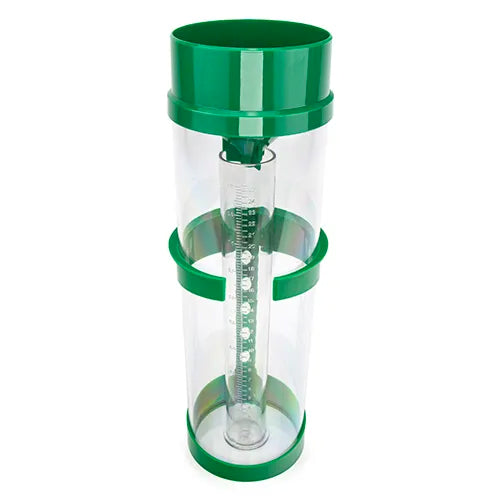How to Pick the Right Rain Gauge for Reliable Precipitation Monitoring
How to Pick the Right Rain Gauge for Reliable Precipitation Monitoring
Blog Article
Introducing the Scientific Research Behind Rain Determines: Just How These Gadgets Play a Vital Role in Environment Research and Ecological Tracking
Rain gauges, relatively basic tools, hold an extensive importance in the world of environment research study and environmental tracking. These humble tools quietly accumulate one of nature's most necessary elements-- rains. Yet, behind their plain facade exists an intricate scientific research that is crucial for comprehending the dynamics of our atmosphere. As we peel off back the layers of this scientific shroud surrounding rainfall gauges, we discover a globe where precision, data accuracy, and thorough monitoring converge to reveal a deeper understanding of our transforming climate and its effect on the planet.
Value of Rainfall Scales
Rainfall determines play an important function in monitoring and determining rainfall levels, providing necessary data for climate research study and analysis. These devices are basic in measuring the quantity of rainfall that happens in a details area over a particular duration. By gathering and measuring rainwater, rainfall gauges deal important insights into the circulation and strength of precipitation, helping meteorologists, hydrologists, and climatologists in understanding weather condition patterns and patterns.
In addition, long-lasting data collected from rainfall evaluates helps in analyzing environment adjustment effects and patterns, contributing significantly to scientific study and decision-making procedures. In essence, rainfall assesses serve as essential devices in the field of meteorology and ecological scientific research, playing a vital role in progressing our understanding of weather and environment dynamics.
Types of Rain Scales

Functionality and Procedure
In the world of environment research and meteorological researches, the performance of rainfall determines lies in their intricate performance and exact operational systems. Rain evaluates are made to properly determine the amount of rainfall that falls over a certain location throughout a collection duration.
The performance of rainfall evaluates is based on the principle of collecting and determining rainwater in a standard manner. This accumulated data is critical for comprehending neighborhood climate patterns, tracking long-lasting climate patterns, and evaluating environmental effects. To make certain precise measurements, rain assesses demand to be tactically put in open areas away from obstructions such as buildings or trees that can hinder the collection process.
The functional element of rain determines entails routine maintenance to avoid particles accumulation, calibration checks to maintain dimension precision, and information videotaping for analysis (rain gauge). In general, the capability and procedure of rain gauges are essential for gathering trusted rainfall data crucial to climate research and environmental tracking
Role in Climate Study
Given the important significance of exact rainfall dimensions in comprehending weather condition patterns and ecological effects, the role of rainfall assesses in climate study is important. Rain determines offer vital information for environment study by quantifying the amount of precipitation that drops over a specific area throughout an offered period. This information is essential for keeping track of long-term fads in precipitation patterns, evaluating the effect of environment adjustment on rains circulation, and enhancing environment versions.

Climate scientists utilize information collected from rain gauges to assess variations in precipitation levels, determine regional environment patterns, and assess the performance of water source management strategies. By contrasting historic rainfall information with current measurements, scientists can identify changes in rainfall patterns, such as modifications in the frequency or intensity of rainfall occasions. This details is crucial for comprehending how climate change is influencing rainfall dynamics and can assist policymakers make educated decisions relating to adaptation and reduction strategies.
Applications in Ecological Tracking

In flooding forecasting, rainfall gauge information aids to track rainfall strength and distribution, enabling authorities to provide timely warnings and take essential procedures to reduce flood dangers (rain gauge). Drought monitoring counts on rain gauge information to evaluate wetness levels in the dirt and track precipitation shortages, assisting in the identification of drought-prone areas and the application of dry spell response approaches
Furthermore, rain gauge information plays an essential duty in water resource management by providing info on water accessibility and use patterns. In addition, in farming, rainfall gauge data helps farmers in optimizing irrigation schedules, crop option, and overall farm management practices based on local precipitation patterns.
Final Thought
Finally, rainfall evaluates are essential tools for gauging rainfall, providing useful information for environment research and ecological monitoring. With different types and capabilities, rain assesses play a critical function in recognizing rainfall patterns and their effect on the environment. By accurately gauging rainfall, these tools add to the advancement of scientific knowledge and help in making informed decisions relevant to water source management and calamity readiness.
Rain determines play a crucial duty in tracking and determining precipitation degrees, use this link offering vital information for environment study and analysis. The standard rainfall gauge, recognized as the "tipping bucket" scale, is one of the most typically made use of tools. Ultrasonic rain gauges use audio waves to identify the visibility of rainfall, providing real-time data on rainfall degrees.Climate researchers make use of data gathered from rain assesses to analyze variants in rainfall levels, recognize regional climate patterns, and assess the performance of water resource management visite site techniques.In final thought, rain evaluates are necessary tools for gauging precipitation, supplying useful data for environment research study and ecological monitoring.
Report this page